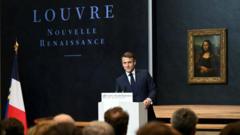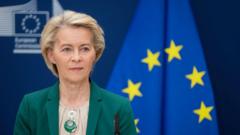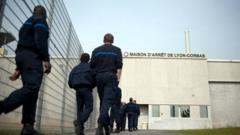The Louvre's overhaul plan, led by President Macron, aims to address issues of overcrowding and outdated infrastructure while improving the showcase for its iconic artwork, including the Mona Lisa.
Revitalizing the Louvre: A New Era for the Iconic Museum

Revitalizing the Louvre: A New Era for the Iconic Museum
As part of a major renovation plan, the Mona Lisa will be relocated to enhance visitor experience and alleviate overcrowding.
In an ambitious announcement, French President Emmanuel Macron unveiled a transformative renovation plan for the Louvre Museum, starting with the relocation of the renowned Mona Lisa painting. This move is designed to enhance the experience for the approximately 30,000 daily visitors who flock to see Leonardo da Vinci's masterpiece. The new presentation aims to better honor the artwork while alleviating the severe overcrowding issues that have plagued the museum, which draws more than nine million visitors each year.
Macron's initiative, dubbed the New Renaissance, includes a design competition for a new entrance to the museum that aims to ease congestion and integrate the museum more seamlessly into the city. Currently, the iconic glass Pyramid remains a bottleneck, as Louvre director Laurence des Cars has described it as "structurally unable to cope" with visitor numbers. At present, viewers of the Mona Lisa only get about 50 seconds to appreciate the iconic painting—far from an ideal art-viewing experience.
Beyond just addressing crowding, the renovation will feature comprehensive updates to outdated facilities, including additional toilets and dining areas, with an estimated budget of several hundred million euros. Macron emphasized that the cost would not burden taxpayers, as the funding would come primarily through ticket sales, donations, and partnerships, such as the sponsorship from the Louvre Abu Dhabi.
With plans for a redesigned eastern facade featuring a "green" esplanade, the renovation is set to modernize the landmark that has not seen such a significant transformation since former President François Mitterrand's Grand Louvre project 40 years ago. The initiative has been partly fueled by Macron's desire to leave a meaningful legacy, inspired by his previous success in overseeing the restoration of Notre-Dame Cathedral.
As the Louvre prepares for its transition, it marks a pivotal moment in the relationship between art, architecture, and visitor experience, aiming to ensure that its treasures are appreciated in a new light.
Macron's initiative, dubbed the New Renaissance, includes a design competition for a new entrance to the museum that aims to ease congestion and integrate the museum more seamlessly into the city. Currently, the iconic glass Pyramid remains a bottleneck, as Louvre director Laurence des Cars has described it as "structurally unable to cope" with visitor numbers. At present, viewers of the Mona Lisa only get about 50 seconds to appreciate the iconic painting—far from an ideal art-viewing experience.
Beyond just addressing crowding, the renovation will feature comprehensive updates to outdated facilities, including additional toilets and dining areas, with an estimated budget of several hundred million euros. Macron emphasized that the cost would not burden taxpayers, as the funding would come primarily through ticket sales, donations, and partnerships, such as the sponsorship from the Louvre Abu Dhabi.
With plans for a redesigned eastern facade featuring a "green" esplanade, the renovation is set to modernize the landmark that has not seen such a significant transformation since former President François Mitterrand's Grand Louvre project 40 years ago. The initiative has been partly fueled by Macron's desire to leave a meaningful legacy, inspired by his previous success in overseeing the restoration of Notre-Dame Cathedral.
As the Louvre prepares for its transition, it marks a pivotal moment in the relationship between art, architecture, and visitor experience, aiming to ensure that its treasures are appreciated in a new light.





















